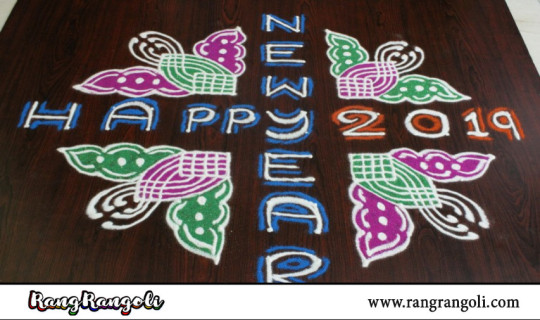Text
Kolam Styles - Interesting and Creative Traditional Welcoming Art
If you visit Tamil Nadu and take a walk through any residential locality, a common feature that you find in all houses is a rangoli, called Kolam in this place. You can find numerous patterns, from simple ones to very complicated designs. On normal days, the rangoli is done only with white powder, which is traditionally rice flour but stone dust can used for the purpose also. However , if it's festival time, every style appears like a riot of shades. Typically, kumkum and turmeric are accustomed for yellow and red colors which are applied in mixture with white powder. However , you also get yourself a complete large amount of synthetic colors used to decorate your doorstep.

Different patterns are created using lines and dots. In Tamil, a stroke or a member of family line is named a Kambi or Sikku and a dot is named Pulli. The majority of the rangoli designs have these two components. In some rangoli patterns, a kambi snakes through the many pulli and finally finishes at the starting point. This sort of a stroke is called neli because of the way the line snakes amidst the dots. As the neli passes along the dots, it encircles them forming a knot like design. Any number of dots can be used for the purpose. The pattern comes out in different shapes. Usually, the longest dotted collection is usually laid at the center and the subsequent dotted lines are laid in descending order until the shortest collection is usually reached. Dots are placed one below the other. When the dotted grid is done, you have a symmetric design completely. Strokes are accustomed to join the dots and type various patterns in that case. One of the most typical patterns may be the chariot.
In kolam designs where lines are drawn between two dots, the strokes are known as Kotto or Kodu. These are short lines and only span between two consecutive dots. Geometrical patterns and defined shapes are formed in this type of design. There are also designs which are made with the combination of pulli, sikku, kodu, kambi and neli. The complex last picture of the mixture appears very beautiful.
Once the basics are known by you of laying dots and connecting them with lines in various forms, you may invent and discover a lot of combinations. Kolam designs aren't limited to particular patterns. If you feel that you could join dots and develop a far more complicated bird, go on and perform it. Further, you can embellish your kolam styles with colors and various materials such as for example pulses, grains, seeds, sand, sticks, lights, mirrors, pebbles and several other things. The scope of kolam designs is actually restricted by your ability and creativeness to innovate.
To know more details visit here: easy rangoli
0 notes